
Asian Cinema
Scope & Guideline
Advancing Scholarly Dialogue in Asian Film Studies
Introduction
Aims and Scopes
- Cultural Representation and Identity:
The journal focuses on how Asian cinema reflects and shapes cultural identities, exploring themes of ethnicity, gender, and sexuality within various national contexts. - Historical and Political Contexts:
It examines the historical narratives and political undercurrents that influence Asian films, analyzing how cinema responds to and critiques socio-political issues. - Interdisciplinary Approaches:
The journal encourages interdisciplinary methodologies, integrating insights from film studies, cultural studies, sociology, and history to enrich the analysis of Asian cinema. - Reflexivity and Aesthetic Strategies:
There is a consistent focus on reflexivity in film, investigating how filmmakers use aesthetics to comment on societal issues and personal experiences. - Transnational Perspectives:
The journal explores transnational influences and exchanges in Asian cinema, considering how films traverse cultural and geographical boundaries.
Trending and Emerging
- Queer Cinema and Gender Studies:
There is a rising interest in queer cinema and gender studies, focusing on the representation of LGBTQ+ identities and feminist perspectives in Asian films, showcasing a shift towards inclusivity and diversity in film criticism. - Documentary and Political Engagement:
The journal is increasingly publishing works that explore the role of documentary filmmaking in political discourse, particularly in contexts of activism and social movements, such as the Hong Kong protests. - Reflexive Aesthetics:
Emerging themes highlight reflexive aesthetics in cinema, where filmmakers consciously engage with their medium to comment on broader societal issues, reflecting a trend towards self-aware storytelling. - Cinematic Memory and Historical Trauma:
A focus on cinematic representations of memory and historical trauma has gained prominence, analyzing how films address collective experiences of conflict and cultural loss. - Interdisciplinary and Cross-Cultural Studies:
There is a growing trend towards interdisciplinary research that examines the intersections of cinema with other fields such as sociology, anthropology, and cultural studies, promoting a more holistic understanding of film.
Declining or Waning
- Traditional Genre Studies:
There is a noticeable decline in the focus on traditional genre studies, such as martial arts or historical epics, which were once prevalent. Recent publications indicate a shift towards more contemporary and experimental forms of cinema. - Nostalgic Representations:
Themes centered around nostalgia, particularly in relation to earlier cinematic tropes or historical narratives, are becoming less prominent. Current scholarship appears to favor more immediate and pressing socio-political themes. - Commercial Cinema Analysis:
The analysis of mainstream commercial cinema, including box office successes and star-driven narratives, is waning. The journal is increasingly prioritizing independent and art cinema that challenges conventional narratives. - Cinematic Techniques:
While technical analysis has been a staple in film studies, there is a reduction in discussions solely focused on cinematic techniques. The emphasis is shifting towards thematic and contextual interpretations.
Similar Journals

Cinema-Journal of Philosophy and the Moving Image
Exploring the Intersection of Thought and Film.Cinema: Journal of Philosophy and the Moving Image is a distinguished open-access journal dedicated to the critical analysis of cinema through the lenses of philosophy and cultural theory. Published by the esteemed New University of Lisbon's IFILNOVA - Nova Philosophy Institute, this journal has been a crucial platform for the dissemination of innovative and interdisciplinary research since its establishment in 2010. With an ISSN of 1647-8991 and a significant presence in both Communication and Visual Arts categories, it currently holds a Q4 ranking in 2023, reflecting its growing role in the academic discourse of its field. While the journal has a modest impact as indicated by its Scopus rankings, it serves as a vital resource for researchers, professionals, and students interested in the intersection of philosophy and the moving image, fostering rich dialogues about cinema's impact on society and culture. Situated in Portugal, Cinema invites submissions that challenge conventional perceptions, engaging with both contemporary and historical contexts of film and imagery, thereby playing an essential role in expanding the horizons of film studies.
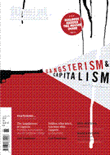
Film International
Celebrating the Intersection of Film, Culture, and Society.Film International is a prominent journal dedicated to the exploration of film and its cultural, social, and artistic significance. Published by INTELLECT LTD, this journal serves as a platform for interdisciplinary studies in the field of film criticism, theory, and scholarship, contributing valuable insights from both established and emerging researchers. With an ISSN of 1651-6826 and an E-ISSN of 2040-3801, the journal is an essential resource for those engaged in the realms of communication, cultural studies, and visual arts, though it is currently classified in the lower quartiles of these fields (Q4). Noteworthy for its critical perspectives and diverse content, Film International enhances the dialogue surrounding cinematic practices and their impact on society. Researchers, professionals, and students can explore its rich assemblage of articles and reviews that reflect the evolving landscape of film studies, making it a significant addition to the academic community focused on the art of film.
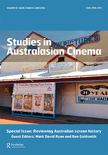
Studies in Australasian Cinema
Charting New Territories in Australasian Film StudiesStudies in Australasian Cinema is a premier scholarly journal published by ROUTLEDGE JOURNALS, TAYLOR & FRANCIS LTD, dedicated to the exploration of film and cinema within the Australasian context. With an ISSN of 1750-3175 and an E-ISSN of 1750-3183, this journal provides a vital platform for researchers, professionals, and students in the fields of Visual Arts and Performing Arts and Communication. Notably, it holds a prominent Q1 rank in Visual Arts and Performing Arts, reflecting its impact within the academic community. Although it is not an open access journal, its rigorous peer-review process ensures the highest quality of published research. Since its inception in 2007, Studies in Australasian Cinema has continued to contribute significantly to discourse surrounding film theory, criticism, and production, making it an essential read for anyone interested in the evolving landscape of Australasian cinema.

Transnational Screens
Exploring the Global Canvas of Visual and Performing ArtsTransnational Screens is a premier academic journal published by Taylor & Francis Ltd, focusing on the dynamic intersections of visual arts, performing arts, and communication in a globalized context. Since its inception, the journal has garnered significant recognition, featuring in the Q1 category for Visual Arts and Performing Arts and Q3 for Communication as of 2023, reflecting its influential contributions to these fields. With a Scopus ranking placing it in the 78th percentile in Visual Arts and Performing Arts, this journal serves as a vital platform for researchers, professionals, and students aiming to explore the implications of transnational narratives in contemporary media and artistic practices. The journal is accessible to a diverse readership and promotes open dialogue through its commitment to publishing innovative and interdisciplinary research from 2020 to 2024. As a key resource for understanding the complexities of transnational screens, it invites submissions that push the boundaries of traditional scholarship and engage with pressing global issues through the lens of the visual and performing arts.

MEXICAN STUDIES-ESTUDIOS MEXICANOS
Charting New Territories in Latin American ScholarshipMEXICAN STUDIES-ESTUDIOS MEXICANOS, published by University of California Press, is a distinguished journal that explores critical issues in the fields of cultural studies and history, with a keen focus on Mexican and Latin American contexts. Established in 1985, this journal serves as an invaluable platform for researchers, professionals, and students alike, aiming to deepen understanding of Mexico's complex social, cultural, and historical landscapes. With an impressive placement in the Q2 category in both Cultural Studies and History, it ranks within the top tiers of scholarly discourse, demonstrating a strong impact factor that reflects its significance in the academic community. Although it does not currently offer Open Access, the journal remains committed to delivering high-quality, peer-reviewed research that stimulates ongoing debates and enriches scholarship in the humanities and social sciences. Nestled at the heart of scholarly conversations, MEXICAN STUDIES-ESTUDIOS MEXICANOS continues to play a pivotal role in advancing academic inquiry into Mexico's past and present.
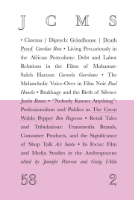
JCMS-Journal of Cinema and Media Studies
Exploring the Intersection of Cinema and SocietyJCMS-Journal of Cinema and Media Studies, published by University of Texas Press, stands as a vital platform for scholars and practitioners in the realms of cinema, media, and visual arts. With an ISSN of 2578-4900 and an E-ISSN of 2578-4919, the journal has been a part of the academic landscape since its inception in 2018 and will continue to contribute valuable research until 2024. Notably ranked in the top tiers of Scopus, securing Q1 status in Visual Arts and Performing Arts and Q3 in Communication, JCMS features articles that critically engage with both traditional and contemporary issues in media studies. Located in the United States, the journal is committed to providing open access to a wide array of interdisciplinary research, fostering dialogue among researchers, students, and media professionals. By serving as a nexus for innovative scholarship and creative discourse, JCMS enriches our understanding of cinematic and media practices and their impact on society today.
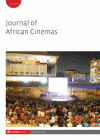
Journal of African Cinemas
Fostering Insights into the World of African CinemasJournal of African Cinemas is a pioneering publication dedicated to exploring the dynamic field of African cinema and its cultural impacts. Published by INTELLECT LTD in the United Kingdom, this journal serves as a crucial platform for researchers, filmmakers, and students interested in understanding the complexities of film within the African context. With ISSN 1754-9221 and E-ISSN 1754-923X, the journal focuses on various aspects of cinema, including theory, production, and reception, highlighting the rich tapestry of storytelling from the African continent. Despite being classified in Q4 in Communication and Q3 in Cultural Studies and Visual Arts & Performing Arts for 2023, it stands out by capturing the multifaceted identities and experiences portrayed in African films. Engaging with a diverse array of interdisciplinary topics, the Journal of African Cinemas invites contributions that foster critical discourse and promote a deeper understanding of the unique aesthetic and social narratives present in African filmmaking. As it converges into a significant scholarly resource from 2017 to 2023, this journal is an essential read for anyone invested in the intersection of culture and cinema.
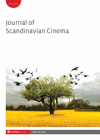
Journal of Scandinavian Cinema
Diving into the Innovations of Scandinavian CinemaThe Journal of Scandinavian Cinema, established in 2014 and published by INTELLECT LTD, serves as a premier platform dedicated to the interdisciplinary field of film studies with a specific focus on Scandinavian cinema. With an impressive Q2 category ranking in Visual Arts and Performing Arts for 2023, and a Scopus rank placing it in the top 62nd percentile of its category, this journal is instrumental in advancing scholarly dialogue within the arts community. The journal strives to explore and critique cinematic expressions from the Nordic countries, contributing to a nuanced understanding of cultural narratives and filmic innovations. Committed to fostering accessibility and engagement, it caters to a diverse audience including researchers, professionals, and students keen to delve into the artistic, cultural, and political dimensions of cinema. The Journal of Scandinavian Cinema is essential for anyone interested in the evolution and impact of film in the Scandinavian context, promising rich insights and a robust collection of scholarly articles.

Film History
Illuminating cinema's past to inspire future narratives.Film History, published by Indiana University Press, is a premier academic journal that delves into the evolving landscape of cinema, illuminating the intricate interplay between historical narratives and film culture. With ISSN 0892-2160, and E-ISSN 1553-3905, this journal has established itself as a crucial resource for researchers, professionals, and students in the fields of history and visual arts. Recognized in the Q2 category for both History and Visual Arts and Performing Arts as of 2023, it boasts impressive Scopus rankings, securing #152 out of 667 in Visual Arts and Performing Arts, and #524 out of 1760 in History, placing it in the top 30th percentile. Although it does not currently offer open access options, the journal provides a wealth of scholarly articles that critically engage with film as a historical text, fostering a deeper understanding of its role in shaping societal narratives. Since its inception in 1987, Film History has been at the forefront of academic discourse, making it an invaluable resource for those seeking to explore the rich tapestry of cinematic history.

Etica & Cine
Highlighting the Ethical Implications of Screen NarrativesEtica & Cine is a distinguished open-access journal published by the University of Buenos Aires, Faculty of Psychology, dedicated to the interdisciplinary field of ethics in cinema and visual culture. With the ISSN 2250-5660 and E-ISSN 2250-5415, this journal has been a vital platform for researchers, professionals, and students since its inception in 2011, providing a space for critical discourse surrounding the ethical dimensions of film and media. The journal aims to foster scholarly dialogue by publishing high-quality articles that explore the philosophical, social, and psychological implications of filmic representations. While the journal's H-index is yet to be established, its commitment to open access ensures that valuable insights are readily available to a global audience, thus enhancing its significance in academic and professional circles. As the conversation around ethics in cinema continues to evolve, Etica & Cine stands as an essential resource for anyone engaged in this vital area of study.